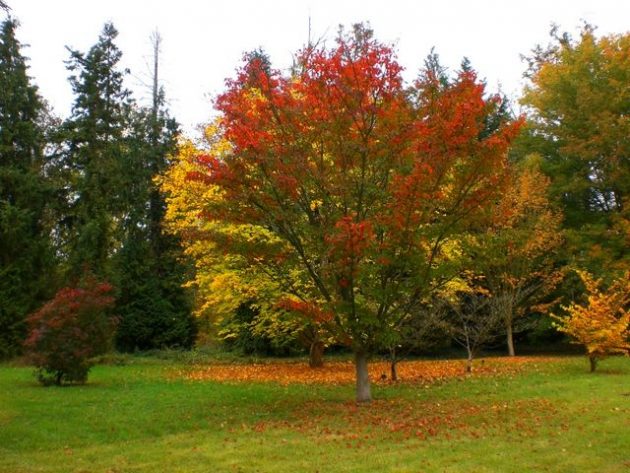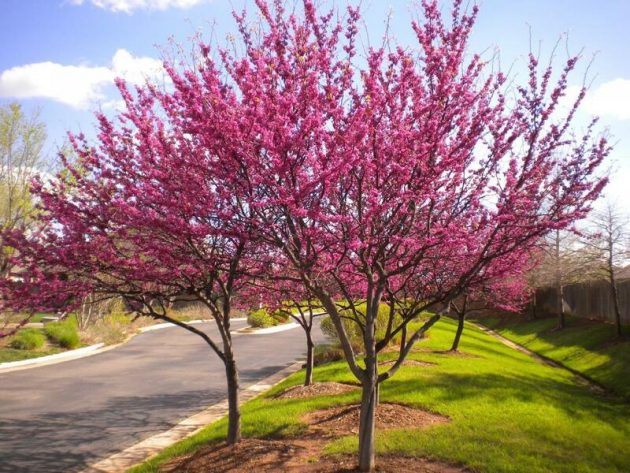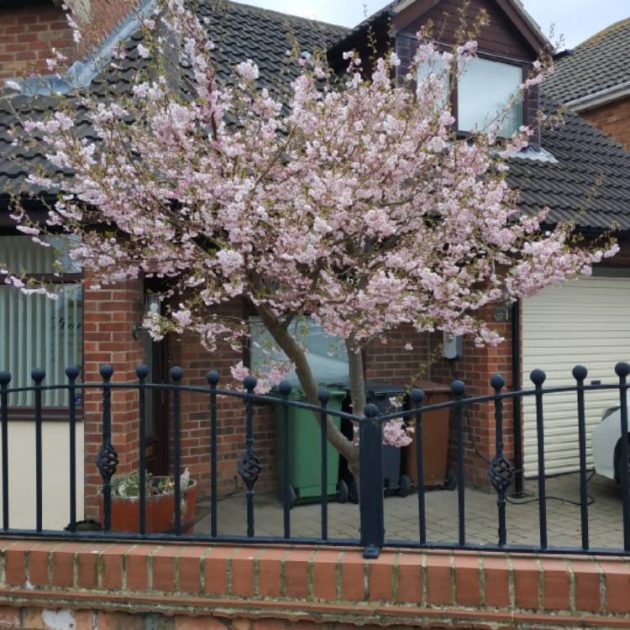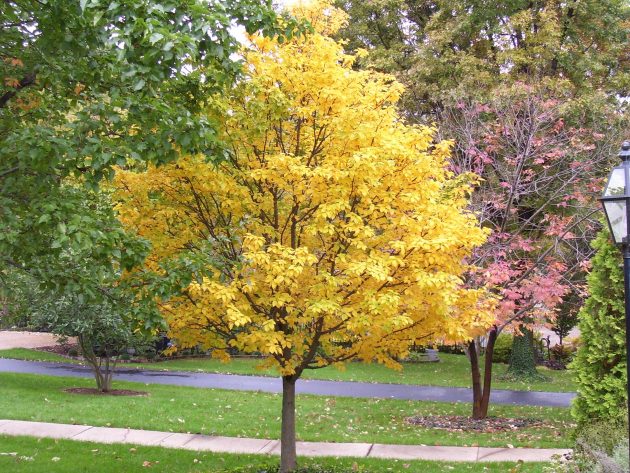If like us, you have found yourself spending heaps more time around your home this year than you normally would, it’s quite likely that you have started to feel like your property could do with some freshening up. Up until now, the area that is thought about last is the one we have been relying on most – the garden.
With lockdowns still in place in many countries around the world, our gardens have become our playgrounds once again and the time we have been spending in them has reminded us of their importance. With our busy lives, it is easy to forget that our gardens can be a place of refuge not just for us but for the various animals that enrich our lives. A beautifully landscaped garden can provide an oasis of calm but unfortunately, the trend over the last number of years has been for low maintenance hard landscaping. While hard landscaping can be beautiful and provides extra outdoor living space, it is often not an environmentally friendly option.
So, if you’re considering relandscaping your garden read on to find out which trees you should consider before talking to your landscape designer.
Design
When planning a new garden, or adding to your existing one, it is a good idea to start at the finished article and work backward. What do you want the garden to achieve for you? There are certain principles of garden design that you can use to decide how best to proceed. By following these principles you give your garden the best chance of working for you.
These principles are also applicable to the trees you choose to plant in your garden.
- What do I want the trees to do? – Provide privacy or maybe just a splash of color?
- What don’t I want the trees to do? – Block light? Overhand neighbors’ property?
- How will the tree look in proportion to my home? – You don’t want your trees towering above your house!
- Is the tree too close to the house? – Could the roots cause damage to foundations or sewer lines?
- Are the trees the centerpiece of the garden or just part of the overall finished article?
Once you have answered these questions you will have a much firmer idea of the types of trees you need. Here are some trees that we love that you should consider for your landscaping project;
‘Giant Green’ Arborvitae (Thuja)
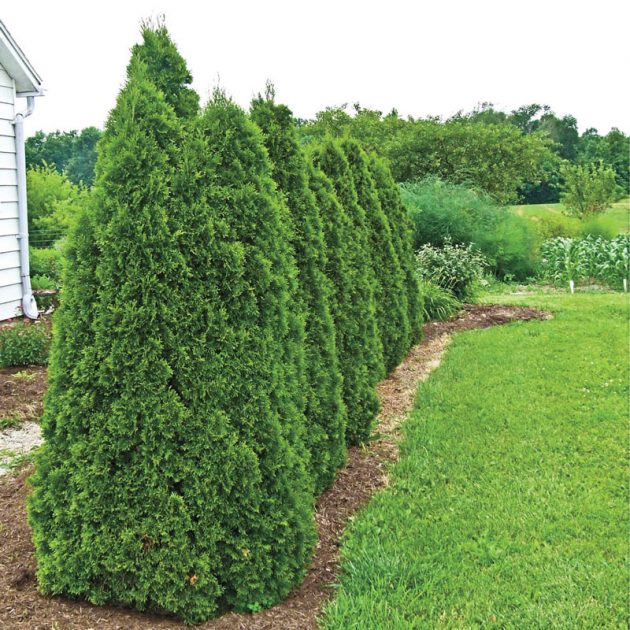
green giant 1.JPG
This tree is a fast-growing evergreen of the Cypress family that is very easy to grow as it is forgiving concerning the soil types it requires. The ‘Giant Green’ Arborvitae has a conical shape and grows to a height of 50 – 60 feet with a spread of 12 – 20 inches making it the ideal tree to provide your home with lots of privacy.
The ‘Green Giant’ has thick bushy foliage and the tree’s height makes it an ideal choice for a large plot. If you have a smaller plot be aware that the height of the tree could present issues with shade but don’t let that put you off as a good Tree Service, such as the guys over in Trufast, can help you keep the height in check.
Red Snake Bark Maple (Acer capillipes)
The red snake bark maple is a beautiful deciduous tree that will grow to a height of between 30 – 50 feet with a spread of 12 – 24 feet. The tree originates in Japan and is one of the most beautiful snake bark maples with an almost weeping-like appearance. In summer the tree has beautiful green foliage while in fall the leaves of this maple turn a mesmerizing orange-red color making it the ideal centerpiece for your garden.
The red snake bark maple is hardy, slow-growing, and likes moist but well-drained soil and will make an instant impression when planted in front of your house.
Fragrant Snowbell (Styrax Obassia)
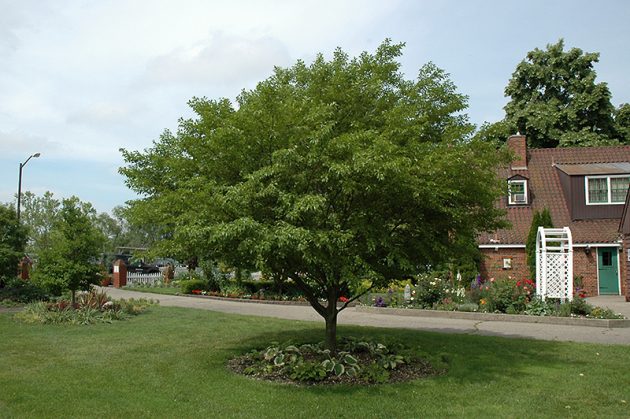
Another tree native to Japan, on maturity, the Fragrant Snowball will have reached a height of between 30 – 40 feet with a spread of between 12 and 16 feet. The tree gets its name from flowers that will appear in late spring or early summer. The hint is in the name, but these flowers have a beautiful smell that while attractive to the eye, will also attract bees to your garden helping you to do your bit for the planet.
Another hardy tree, the Fragrant Snowbell likes well-drained soil that is also moist.
Eastern Redbud (Cercis Canadensis)
One of our favorites, this compact tree is a beautiful addition that will bring color to your garden without overwhelming your house. Growing to a maximum height of 30 feet and with a similar spread, the Eastern Redbud is native to eastern North America. What makes this tree so special is its color. The flowers on the Eastern Rosebud are a magnificent, vivid magenta, and when in full bloom in early spring, this tree brings an explosion of a pinky purple color to your garden.
Once again, the Eastern Rosebud is a hardy tree that will grow in most soil types and thrives in moist, but well-drained soil. For best results, and if space allows, plant these in small groupings for maximum effect.
Ornamental Cherry (Prunus ‘Pink Shell’)
Those of us who have a smaller lot to play with need to be creative in the design of our gardens. This tree is the perfect addition if you have a smaller garden as it grows to a maximum height of 25 feet. Short and squat (the Ornamental Cherry has a spread similar to its height) the tree displays a beautiful pink and white cherry blossom in April and May which will attract bees, insects, and the birds that follow them, to your garden.
While the Ornamental Cherry is hardy enough, it does not do well in shade so ensure that it is planted in a sunny spot that is well-drained. Its size and shape make it the ideal focal point for your front garden.
Korean Mountain Ash (Sorbus Alnifolia)
Saving the best till last here because this tree is an absolute beauty. Varying in size from shrub size (13 feet) but topping out at 65 feet, the Korean Mountain Ash is a tree that would suit any garden size. What makes this tree so special is the variations in color and life it will bring to your yard. Sorbus Alnifolia is deciduous with white flowers in spring, lush green foliage in summer, and a golden brown change through fall. Also in fall, the tree will display clusters of berries that are a red/brown color and will attract many species of birds into your garden.
This tree is hardy, can prosper in semi-shaded conditions, and likes well-drained soil that is humus-rich.
So, there you have it. Six trees that you should consider planting in front of your house. Whichever you choose to go with, know that while improving your life, you are also contributing to the well-being of our planet and ensuring its health for the following generations. If you need advice, contact an arborist, like the guys over in Trufast, who can advise you on the appropriate care ensuring your chosen trees thrive for generations to come.
Happy planting!

